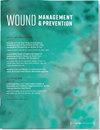实施下肢静脉溃疡教育和临床决策支持:一项质量改进项目。
IF 0.8
4区 医学
Q4 DERMATOLOGY
引用次数: 1
摘要
下肢静脉性溃疡(VLU)需要早期识别和治疗,以防止进一步的伤害。由于缺乏对VLU指南的了解,卫生保健提供者往往不能及时启动基于证据的VLU治疗。目的提高门诊就诊的vlu患者的早期治疗水平。方法采用计划-执行-研究-执行循环进行质量改进。实施了虚拟教育和综合临床决策支持(CDS)命令集。结果指标包括踝肱指数(ABI)测试率、机械压迫治疗和vlu患者的家庭健康服务转诊。还测量了使用CDS订单集的频率。结果共有40名卫生保健提供者参加了3个门诊的虚拟教育课程。与术前相比,踝关节-肱指数测试增加(n = 7;15.9%)至岗位(n = 10;18.2%) (P = .796),但机械压迫治疗较术前有所下降(n = 15;34.1%)至岗位(n = 4;7.3%) (P = .002)和从pre (n = 11;25%)到post (n = 9;16.4%) (p = .322)。CDS订单集在13周内使用了9次。结论未来的计划-执行-研究-行动周期将包括完成面对面的教育和减少VLU cd的订单集长度。未来的项目在实施基于证据的VLU指南时应该考虑这些方法。本文章由计算机程序翻译,如有差异,请以英文原文为准。
Implementing venous leg ulcer education and clinical decision support: a quality improvement project.
BACKGROUND
Venous leg ulcers (VLU) require early identification and treatment to prevent further harm. Health care providers often fail to initiate evidenced-based VLU treatment promptly because of a lack of knowledge of VLU guidelines.
PURPOSE
To improve early treatment for patients with VLUs presenting to outpatient clinic settings.
METHODS
Plan-Do-Study-Act cycles were used for this quality improvement project. Virtual education and a comprehensive clinical decision support (CDS) order set were implemented. Outcome metrics included the rate of ankle-brachial index (ABI) testing, mechanical compression therapy, and home health service referrals for patients with VLUs. The frequency with which the CDS order set was used was also measured.
RESULTS
Forty health care providers attended the virtual education sessions among 3 outpatient clinics. There was an increase in ankle-brachial index testing from pre (n = 7; 15.9%) to post (n = 10; 18.2%) (P = .796), but there was a decline in mechanical compression therapy from pre (n = 15; 34.1%) to post (n = 4; 7.3%) (P = .002) and home health service referrals from pre (n = 11; 25%) to post (n = 9; 16.4%) (P = .322). The CDS order set was used 9 times over 13 weeks.
CONCLUSION
Future Plan-Do-Study-Act cycles will include completing in-person education and reducing the VLU CDS order set length. Future projects should consider these approaches when implementing evidence-based VLU guidelines.
求助全文
通过发布文献求助,成功后即可免费获取论文全文。
去求助
来源期刊

Wound management & prevention
Nursing-Medical and Surgical Nursing
CiteScore
1.70
自引率
8.30%
发文量
41
期刊介绍:
Information not localized
 求助内容:
求助内容: 应助结果提醒方式:
应助结果提醒方式:


